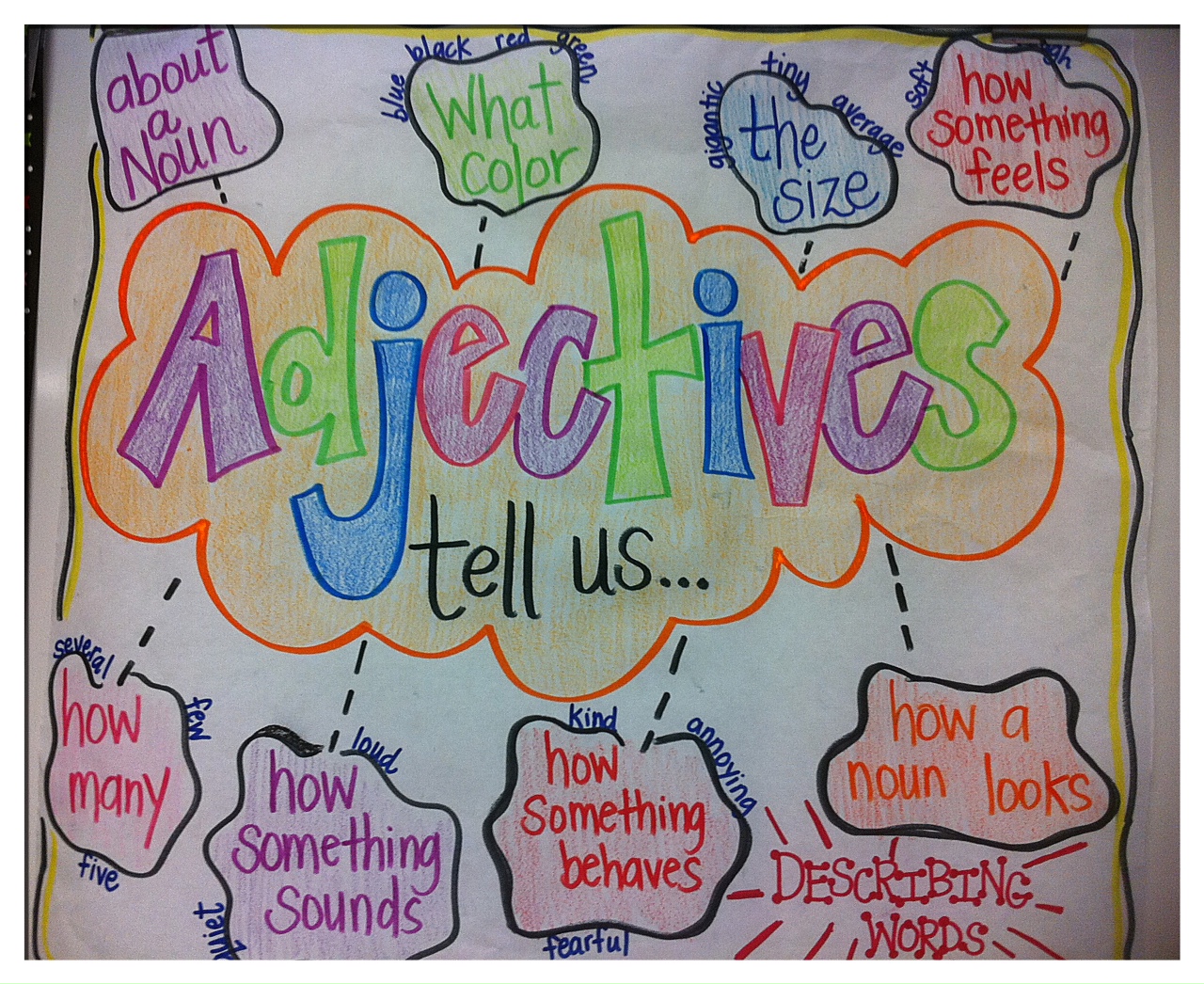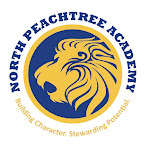Adjective Study Guide
 |
| Source: http://mrswarnerarlington.weebly.com/ uploads/6/9/0/0/6900648/adjectives3.jpg |
- An adjective is a word that describes a noun or pronoun.
- Adjectives tell whose, how much, what kind or how many.
- Encyclopedias have accurate information. (what kind)
- A library has several dictionaries. (how many)
- Articles--a, an, the
- Articles are special kinds of adjectives. Use a and an to refer to any one item in a group.
- A is used before words beginning with a consonant sound.
- An is used before words beginning with a vowel sound.
- Use the to refer to a particular item or items.
- Demonstrative Adjectives--this, that, these, those
- A demonstrative adjective comes before a noun.
- Demonstrative adjectives tell which one or which ones.
- This and these are used to point out nearby people or things.
- That and those are used to point out people or things far away.
- This and that (singular)
- These and those (plural)
- A proper adjective is formed from a proper noun.
- A proper noun names a certain person, place, thing, or idea.
- A proper adjective begins with a capital letter. (Japanese, African, Hawaiian).
- Comparative adjectives compare two nouns or pronouns.
- Add er to most adjectives or add the word more before longer adjectives.
- Superlative adjectives compare three or more nouns.
- Add est to most adjectives or add the word most before longer adjectives.
- Forms of good and bad:
- good, better, best
- bad, worse, worst
- _________________________________________________________________-
4th Grade Language
Noun – names a person, place, or thingStudy Guide – Adjectives/ Review
Verb – shows action, or state of being
Pronoun – takes the place of a noun
Adjective – describes nouns or pronouns
- answers: Which one? What kind? How many? How much? Whose?
- a, an, and the are always adjectives – they are called articles
Writing Comparisons – adding –er or -est
- if the adjective ends with a short vowel sound before the final consonant, then double the final consonant before adding –er or –est
- if the adjective ends in e, drop the final e before adding –er or -est
- whenever you use –er or –est, make sure you state what you are comparing
Information below is NOT on the next test on 2/27.Adverb – describes verbs, adjectives, and adverbs
- answers: Where? When? How often? To what extent? How?
- often ends in –ly
Example: The bird flew in her cage.
Object of the preposition – the noun after the preposition
Example: The bird flew in her cage.
Conjunction- joins words or groups of words
- common conjunctions include: and, but, or, nor, yet, for
Example: Ouch! That bee stung me!
My, look how well you did!




